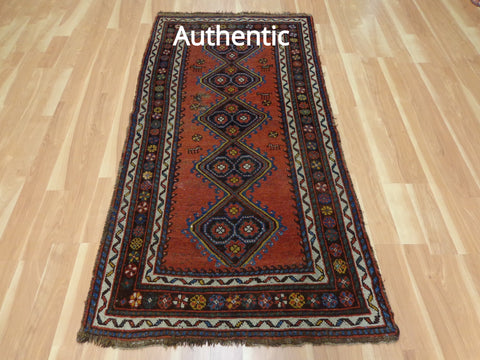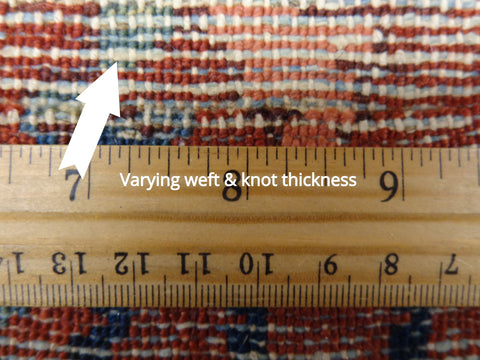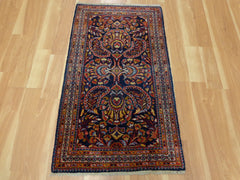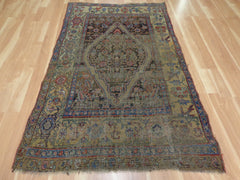Identifying Your Rug
Once you know how to identify a handmade rug, identifying the type of rug you are dealing with is the next step. The following steps will help you to tell if a Persian rug is authentic, for a more in depth guide see our post on How to Identify an Authentic Oriental Rug.

Using an Authentic Rug as an Example
One of the best ways to tell if a rug is handmade when you are starting out is to have an example of a rug you already know is authentic. Whether you already own one, have a friend or relative who owns one, borrow a rug book from a library, or have example photos online it helps to know what you're looking for in the piece in question. Ideally a rug you can refer to in person is better than photos online.
Steps of Identifying an Authentic Hand-Knotted Rug
- Look at the weave on the backside of the rug. Is the fringe attached to the rug, or is it sewn on? Some real rugs do have fake fringe, but most will have the foundation threads still visible on the back.
- Still looking at the backside, you should be able to see the individual knots in a hand-knotted piece. These knots may vary in size depending on the origin of the rug.
- The design on the backside should be close in resemblance to the design on the top of the rug. In machine-made rugs the design on the back will be cloudier and muddled. A machine made rug may also feel like it has a hard plastic backing.
- Hand-knotted rugs are woven with natural materials like cotton and wool. Many machine made carpets are made with nylon or polyester.

Note the varying thickness of weft threads in the Persian Lilihan rug weave pictured above. Also, not every knot is uniform, these are imperfections that only occur in handmade pieces. The finer the quality of the hand-knotted carpet the less likely you are to notice these imperfections.
Identifying Rug Origins
Once you're sure you have a hand-knotted rug, the next step is determining it's origin. This step is much more difficult and even seasoned experts are stumped from time to time.


Persian Rug Identification
Right now we will focus on Persian rug identification. Persian rugs are very diverse in design, from curvilinear floral patterns to nomadic tribal pieces. They were and still are woven in Iran. See for example the two rugs pictured above. Both were hand woven in Iran but at different times and by different people.
Most Persian rugs are named after their origin or for the nomadic group who wove the rug, for example, a Hamedan rug would come from Hamedan. We have a list of many Persian rug types along with photos. Although there are many different designs for each individual sub-type it is a good place to start. If you are really stumped, you can always send us an email with pictures, or post your photos in this forum where rug experts may be able to help you. Most people who identify different rug types have many years of experience under there belts so don't be afraid to ask the experts, it's one of the best ways to learn! This page is a great guide of which pictures to send when you are looking for an ID.
We have many different types of Oriental rugs for sale on our site and our inventory is constantly changing. If you are on the hunt for a specific rug, drop us a line and we can keep your requirements on file.
